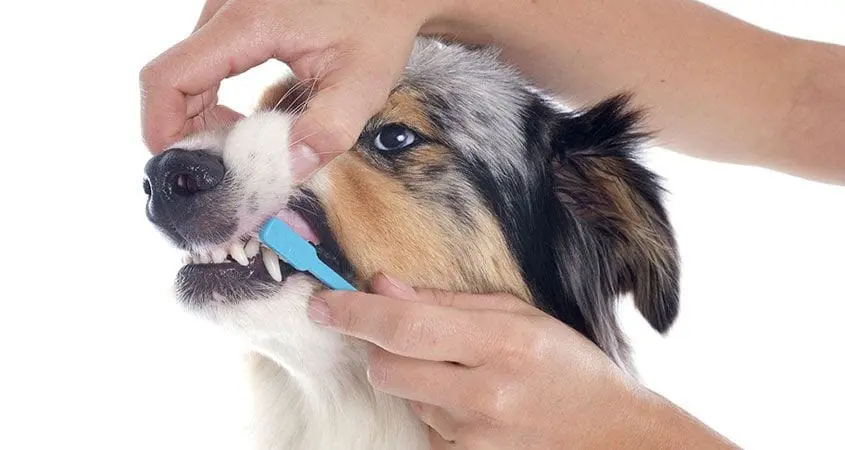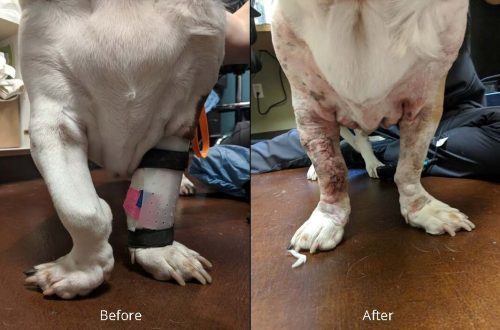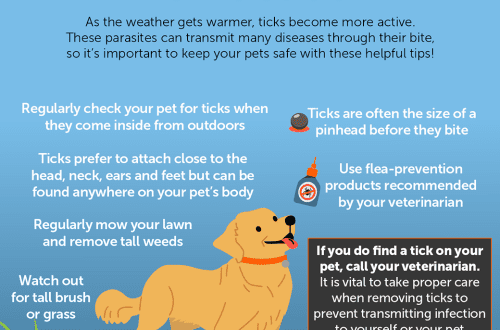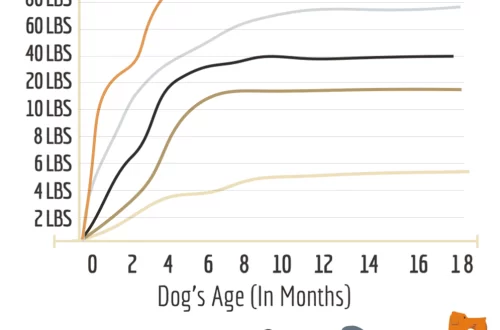
Dog teeth cleaning and oral care at home
As a loving owner, you do your best to keep your dog in top shape. You feed her the most nutritious food and treats, give her daily exercise and take her to preventive visits to the veterinarian. But do you pay enough attention to the care of her oral cavity? If not, then it’s time to change that. In the end, proper home care is what makes the difference between a dog’s healthy teeth and an oral condition that may be causing your dog discomfort (or even pain).
Contents
What does a healthy dog’s mouth look like?
Before you learn how to care for your dog’s teeth (and what can happen if you don’t), you need to understand what a healthy dog’s mouth looks like. For example, how many teeth does your dog have, what do they look like, and do dogs brush their teeth? Healthy dog teeth should be clean and free of plaque and tartar (hard, scaly, or sticky stains). Similarly, your dog’s 42 teeth (that’s a third more than yours, the Pet Health Network emphasizes) should be intact, free of cracks and chips.
Your furry friend’s tongue should be moist – without any signs of lumps or cuts. In most cases, the dog’s gums should be pink. Some breeds of dogs naturally have black or blackish-pink gums, notes PetHelpful, which can make it difficult to look for the usual signs of discoloration. Make sure you know what your pet’s mouth looks like in normal condition and contact your veterinarian if you notice any lumps, swelling, pale gums, or bright red soft tissue.
How to maintain dog oral hygiene
A dog is not born with a healthy mouth that will remain so for life – we must help him keep his white teeth in excellent condition. Regular brushing with a dog toothbrush and some toys and treats designed to reduce bacteria and plaque in your dog’s mouth will help. You yourself brush your teeth several times a day, and likewise, a dog’s mouth also needs daily attention.
If brushing your pet’s teeth is new to both of you, start slowly. As the American Kennel Club (AKC) notes, you first need to teach your dog to feel comfortable when you touch his mouth and teeth, and only then approach him with a toothbrush and toothpaste. First, touch her muzzle and rub your finger over her teeth and gums. Once she gets used to the feeling and stays calm and relaxed, introduce her to the toothbrush. Let her sniff the brush and run it very gently over the dog’s teeth. You may have to repeat these steps for several days until the dog gets used to it. Take your time and don’t rush your pet. After all, you don’t want him to develop anxious or negative associations with the procedure.
Once the confidence needed to successfully brush your teeth has been established, it’s time to work on your technique. First, part your pet’s lips and brush her front teeth. Slowly move towards the back teeth, paying close attention to the outer surface. You may be able to brush only a few teeth at first. Once you both get used to this procedure, you can do it easily and quickly. In addition, there are toothpastes designed specifically for dogs that provide the ultimate palatable experience for those who like turkey and chicken more than minty freshness. Look for a specialty dog toothpaste at your local pet store or veterinary clinic. Remember: in no case Do not use toothpaste made for humans to brush your dog’s teeth, as its ingredients can upset the animal’s stomach and cause severe nausea.
Another important part of dog oral care is an annual professional dental cleaning by a veterinarian. This procedure should be performed under anesthesia at least every three years and no more than once a year, according to the Pet Health Network. Your veterinarian will be able to clean under the gums and other hard-to-reach areas in your dog’s mouth, which will prevent oral and systemic diseases. During this procedure, the doctor may take an x-ray of the animal’s teeth to make sure there are no other problems, similar to what a dentist does when examining you.
In addition to these regular oral care activities, you should monitor your pet’s diet. A food formulated specifically for your dog’s oral health can help reduce plaque and tartar buildup and freshen their breath. For any dog owner who loves to kiss, her fresh breath is a must!
Dog oral problems to be aware of
If you notice any changes in your dog’s mouth, such as lumps, discoloration, swelling, sores, or a change in smell, contact your veterinarian immediately. Any of these signs may indicate that she has developed an oral disease or a condition that needs treatment. Here are some common oral conditions your pet may suffer from and tips on when to see a veterinarian:
- Halitosis. Bad breath (or halitosis) can be the first sign of your pet’s oral health problems, reports the AKC. Halitosis occurs when bacteria from food grows in a dog’s mouth. Another reason could be an infection. If your pet’s breathing is a little strange, start by brushing your teeth more frequently. Halitosis can usually be cured with regular brushing, but if it’s caused by something more serious – like an infection or even kidney disease – you should see your veterinarian.
- Cysts and tumors. Have you noticed lumps in your dog’s mouth? If so, make an appointment with your doctor to check it out immediately. While some lumps and bumps are harmless, those found in a dog’s mouth can be a cyst or tumor, notes PetHelpful. Your veterinarian will be able to drain some of the cysts, and tumors will need to be biopsied and removed if they are malignant.
- Gingivitis. Gingival inflammation caused by heavy plaque buildup on an animal’s teeth is often a sign of gingivitis. The good news is that with regular cleaning, this condition can be removed. Start getting serious about brushing your pet’s teeth daily. If you notice bleeding or discoloration of the gums, contact your veterinarian.
- Periodontal disease. Periodontal disease is an infection between the teeth and gums that can cause swelling, loosening of the teeth, pain, difficulty chewing, or even nasal discharge (people get this condition when they don’t brush their teeth). Benfield Pet Hospital recommends that dog owners watch for signs such as yellow or brown teeth, red or swollen gums, and difficulty chewing. If your dog shows any of these or other signs (loose teeth or pain in the mouth), take him to the veterinarian. He will likely examine your pet for signs of infection and possibly give him a treatment plan.
- Proliferating periodontitis. A condition often seen in Bull Terriers and Boxers where the dog’s gum grows over the teeth, notes the Burnville Veterinary Clinic. This overgrowth dramatically increases the chances of developing an infection and should be treated with antibiotics.
By helping your dog maintain proper oral care, you can avoid all of the above diseases. Show your pet that you care about him and help him keep his teeth, gums and tongue clean.





